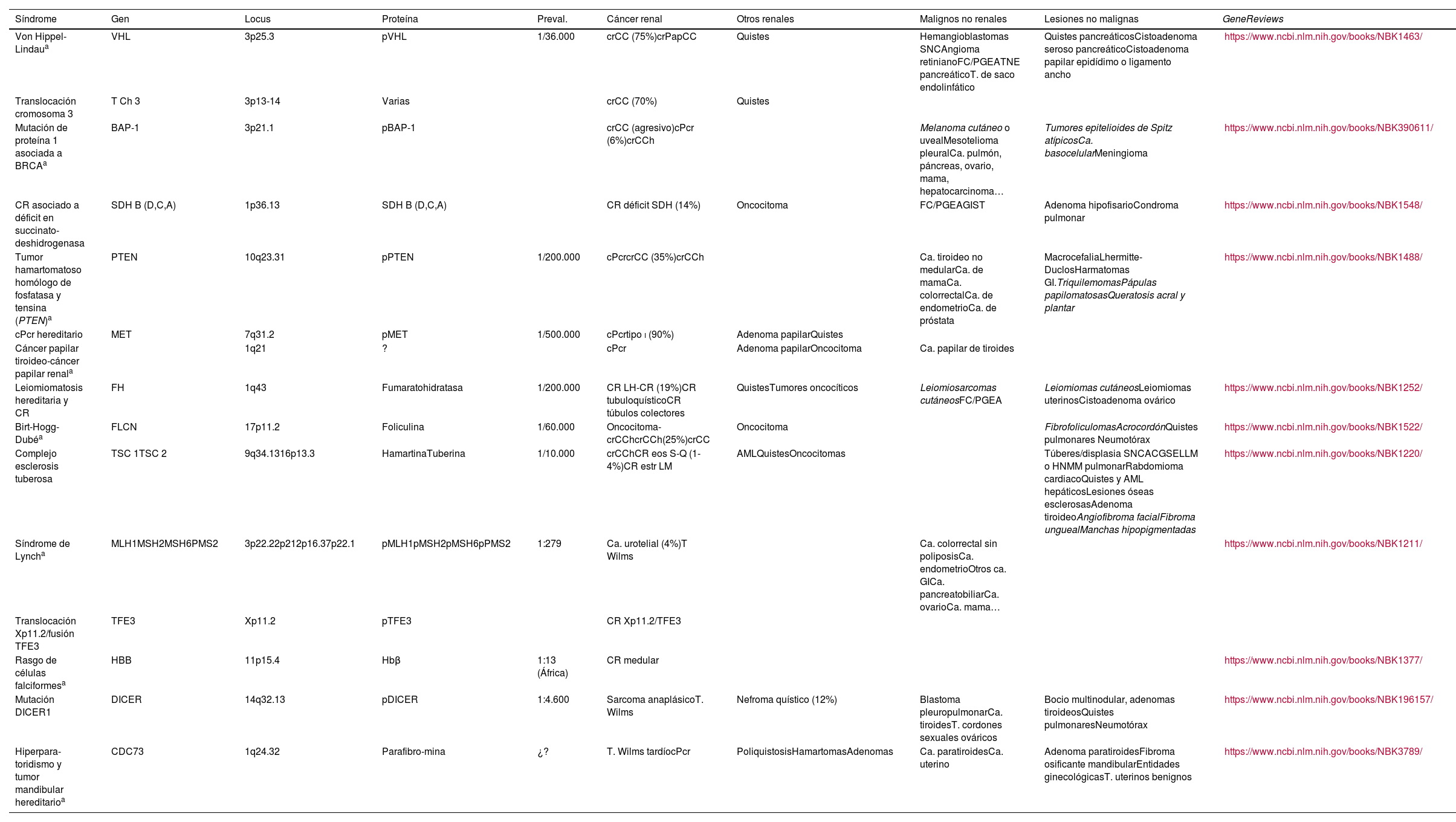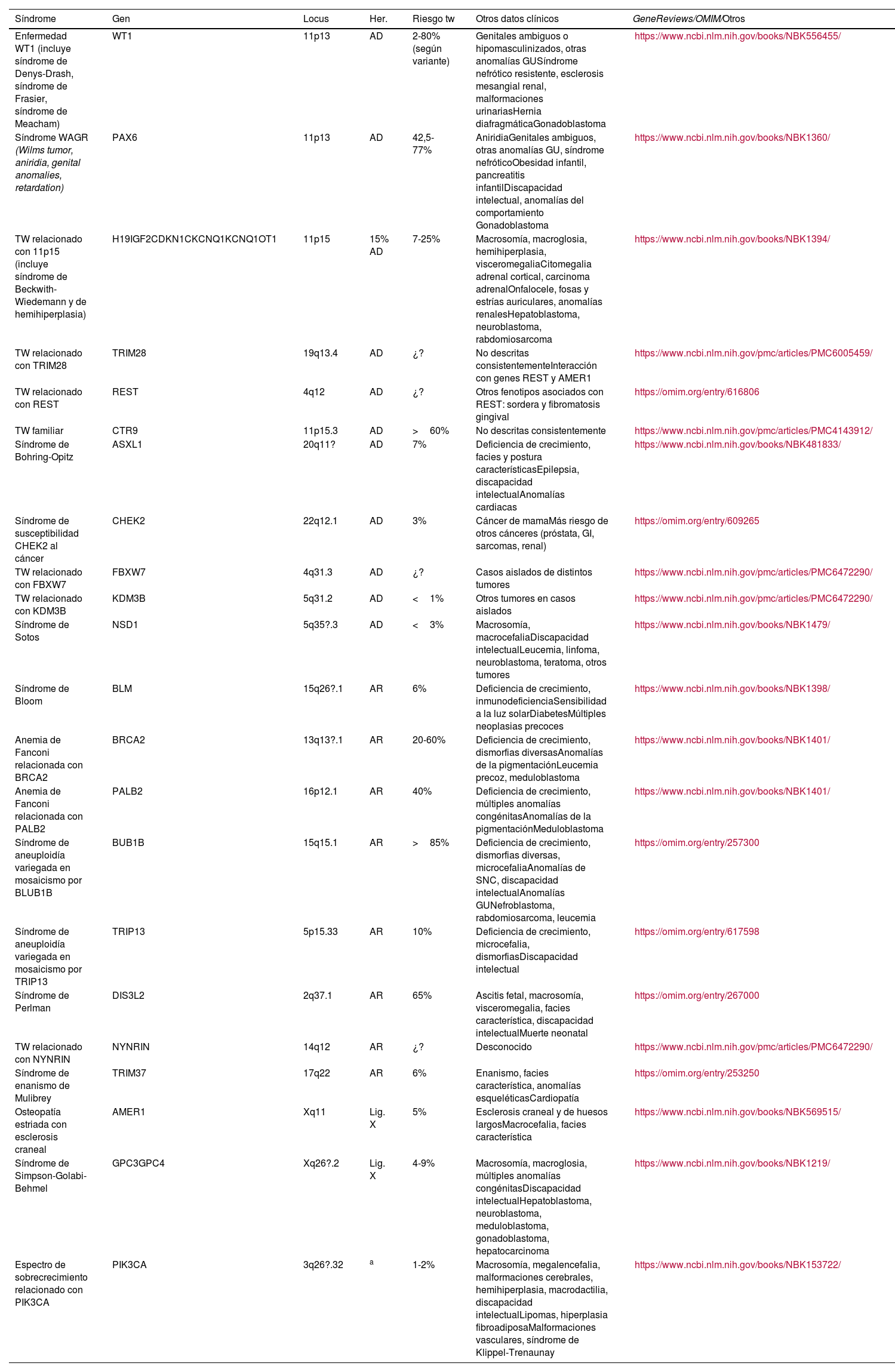El 80% de los carcinomas renales (CR) se diagnostican incidentalmente por imagen. Se aceptan un 2-4% de multifocalidad «esporádica» y un 5-8% de síndromes hereditarios, probablemente con infraestimación. Multifocalidad, edad joven, historia familiar, datos sindrómicos y ciertas histologías hacen sospechar un síndrome hereditario. Debe estudiarse individualmente cada tumor y multidisciplinarmente al paciente, con estrategias terapéuticas conservadoras de nefronas y un abordaje diagnóstico radioprotector.
Se revisan los datos relevantes para el radiólogo en los síndromes de von Hippel-Lindau, translocación de cromosoma-3, mutación de proteína-1 asociada a BRCA, CR asociado a déficit en succinato-deshidrogenasa, PTEN, CR papilar hereditario, cáncer papilar tiroideo-CR papilar, leiomiomatosis hereditaria y CR, Birt-Hogg-Dubé, complejo esclerosis tuberosa, Lynch, translocación Xp11.2/fusión TFE3, rasgo de células falciformes, mutación DICER1, hiperparatoridismo y tumor mandibular hereditario, así como los principales síndromes de predisposición al tumor de Wilms.
Se discuten el CR familiar «no hereditario» y otras entidades malignas y benignas que pueden presentarse como lesiones renales múltiples.
80% of renal carcinomas (RC) are diagnosed incidentally by imaging. 2-4% of “sporadic” multifocality and 5-8% of hereditary syndromes are accepted, probably with underestimation. Multifocality, young age, familiar history, syndromic data, and certain histologies lead to suspicion of hereditary syndrome. Each tumor must be studied individually, with a multidisciplinary evaluation of the patient. Nephron-sparing therapeutic strategies and a radioprotective diagnostic approach are recommended.
Relevant data for the radiologist in major RC hereditary syndromes are presented: von-Hippel-Lindau, Chromosome-3 translocation, BRCA-associated protein-1 mutation, RC associated with succinate dehydrogenase deficiency, PTEN, hereditary papillary RC, Papillary thyroid cancer- Papillary RC, Hereditary leiomyomatosis and RC, Birt-Hogg-Dubé, Tuberous sclerosis complex, Lynch, Xp11.2 translocation/TFE3 fusion, Sickle cell trait, DICER1 mutation, Hereditary hyperparathyroidism and jaw tumor, as well as the main syndromes of Wilms tumor predisposition.
The concept of “non-hereditary” familial RC and other malignant and benign entities that can present as multiple renal lesions are discussed.
Artículo
Comprando el artículo el PDF del mismo podrá ser descargado
Precio 19,34 €
Comprar ahora

























